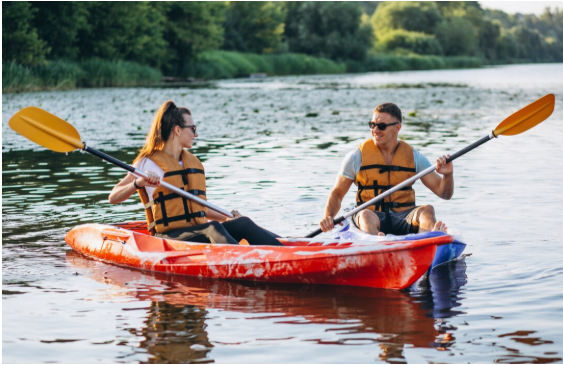River rafting trips are the kind of adventures that awaken every sense. The rush of cold water against the raft makes it an unforgettable experience. But excitement must never replace caution. River rafting, despite its beauty and fun, comes with real risks.
Without taking proper security measures, even the most exquisite journey can turn dangerous within seconds. There are five core security principles that every participant, beginner or expert, must follow. They are important measures that help you minimize risks, and focus fully on the adventure. Read on!
Proper Personal Gear
The river shows no mercy. Whether it’s a calm stream or raging whitewater, having the right personal gear is non-negotiable. Among the most important items is your personal flotation device (PFD), often called a life jacket. A good PFD fits snugly and is certified to handle the intensity of river rapids.
Equally vital is a properly fitted helmet. Rocks in shallow rapids or low-hanging branches in forested areas can cause serious injuries if your head isn’t protected. The helmet should cover your forehead, stay in place as you move, and not obstruct your vision.
Safety Briefing
Before you dip a paddle into the water, your guide should conduct a full safety briefing. This session is not a formality; it’s an essential moment where knowledge is transferred that could save your life.. Pay attention, as every word matters.
During this briefing, you’ll learn paddling techniques, emergency signals, and how to react if you fall into the water. You’ll be taught to adopt the whitewater swim position: feet up, pointing downstream, arms wide to steer, body lying back.
Guides also explain verbal and hand commands. Instructions like “forward paddle,” “stop,” “high side,” or “get down” must be understood clearly.
Understand the River
No two rivers behave the same, and no two days on the same river are alike. One of the most overlooked security measures is taking the time to understand the water you’ll be navigating. The river’s personality shifts depending on weather, dam releases, and even time of day.
Each stretch of river is rated on the International Scale of River Difficulty, from Class I to Class VI. Class I is calm with minor ripples, while Class VI includes dangerous, nearly un-runnable rapids. Knowing your river’s classification helps you prepare physically and mentally.
Team Communication
River rafting is not a solo sport. It’s a team effort that requires every person in the raft to stay connected, aware, and cooperative. Strong communication is one of the most underrated but crucial security measures.
When paddlers work together, the raft becomes a single unit that can respond quickly and adapt to sudden changes. Each person in the raft has a role. Front paddlers lead the pace and set the rhythm. Those in the back help steer and provide strength during sharp turns.
Emergency Response Plan
Planning for emergencies is always essential. Even the best-prepared river rafting trips can be disrupted by equipment failure, weather changes, or health issues. Having a detailed emergency response plan ensures that when something does go wrong, you can handle the situation.
Start with knowing your exit points. On long routes, there should be predetermined locations to leave the river safely. Make sure someone outside the trip knows you’re going into the river. Provide them with start and end points, expected return times, and emergency contact numbers.

